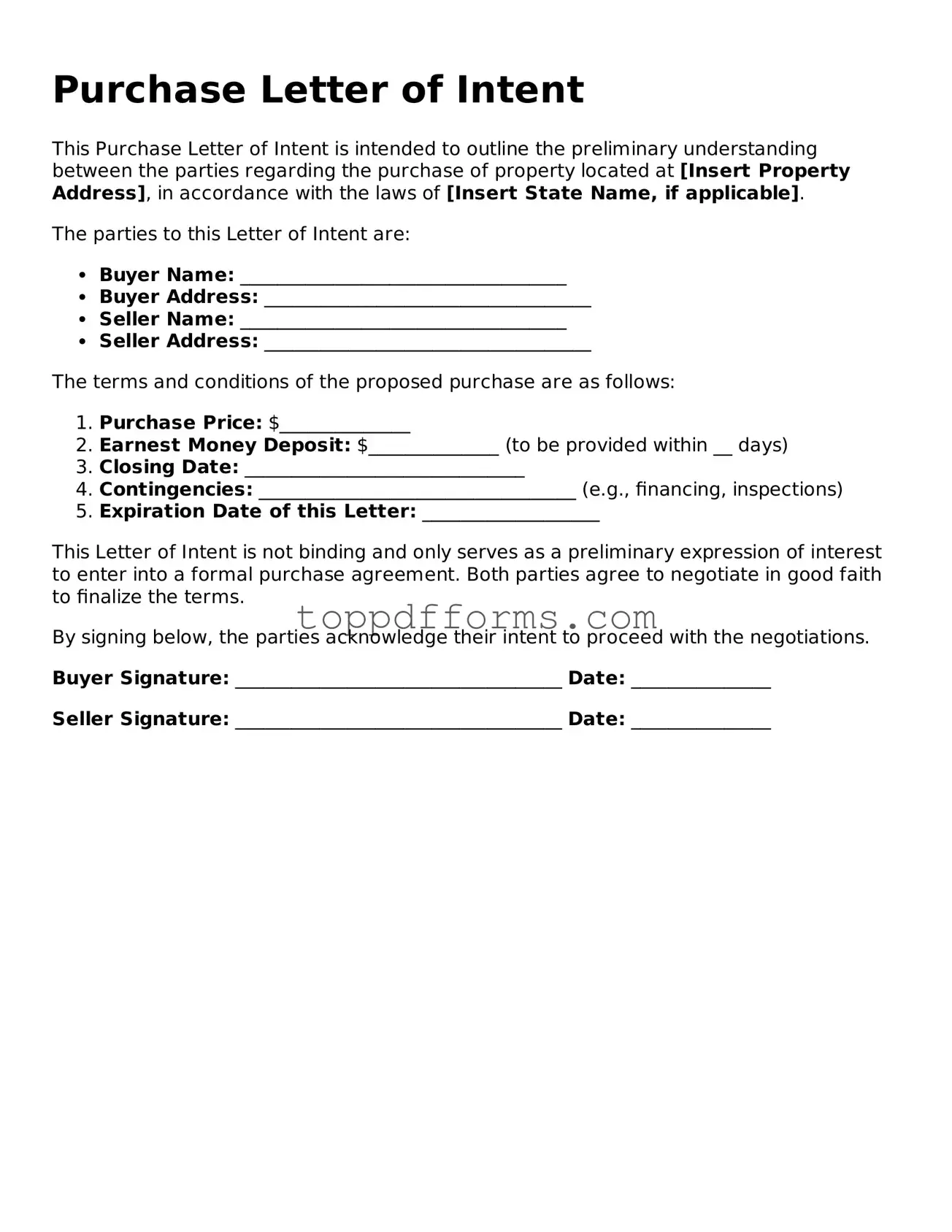When individuals set out to fill out a Purchase Letter of Intent form, they often overlook critical details that can lead to complications down the line. One common mistake is failing to specify the parties involved clearly. It’s essential to identify both the buyer and the seller accurately, including their legal names and contact information. Omitting this information can result in confusion and disputes later.
Another frequent error is neglecting to outline the terms of the offer. A Purchase Letter of Intent should clearly articulate the proposed purchase price and any contingencies. Without this clarity, misunderstandings about the intent can arise, potentially jeopardizing the transaction.
Many people also make the mistake of not including a timeline for the transaction. A well-defined timeline can help keep both parties accountable and ensure that the process moves forward in a timely manner. Without deadlines, delays may occur, leading to frustration and financial implications.
In addition, some individuals fail to address the issue of confidentiality. If sensitive information is shared during negotiations, it’s crucial to include a confidentiality clause in the letter. Neglecting this can expose both parties to risks related to proprietary information and trade secrets.
Another common mistake is not considering the legal implications of the letter. While a Purchase Letter of Intent is generally non-binding, some language can unintentionally create binding obligations. It is important to be cautious about the wording used to avoid unintended consequences.
Many people also overlook the importance of including a clear description of the property or assets being purchased. Vague descriptions can lead to disputes over what exactly is included in the sale. A detailed description helps ensure that both parties have a mutual understanding of the transaction.
Inadequate attention to due diligence is another pitfall. Buyers should specify any conditions related to due diligence, such as inspections or financial reviews. Failing to do so can result in buyers being unprepared for potential issues that could affect the purchase.
Moreover, some individuals forget to include provisions for dispute resolution. Including a method for resolving potential conflicts can save time and resources should disagreements arise. Without such provisions, parties may find themselves in lengthy and costly legal battles.
Another mistake involves not consulting with legal professionals. Many individuals attempt to navigate the complexities of the Purchase Letter of Intent on their own, which can lead to oversights. Seeking legal advice can provide valuable insights and help ensure that the letter is comprehensive and legally sound.
Finally, failing to review the document before submission is a significant error. Simple typos or inaccuracies can undermine the professionalism of the letter and lead to misunderstandings. A thorough review can catch these mistakes and enhance the clarity and effectiveness of the communication.
